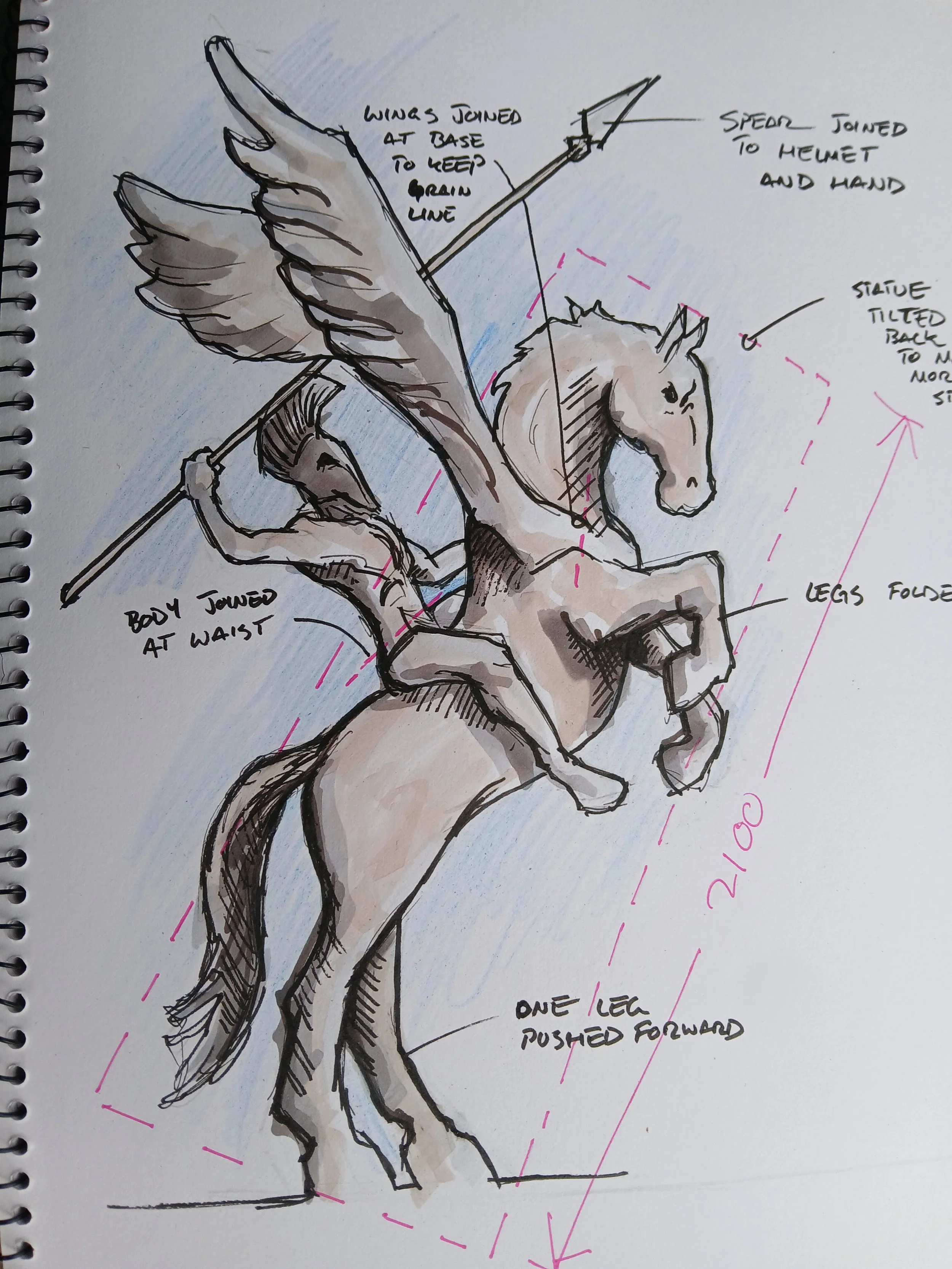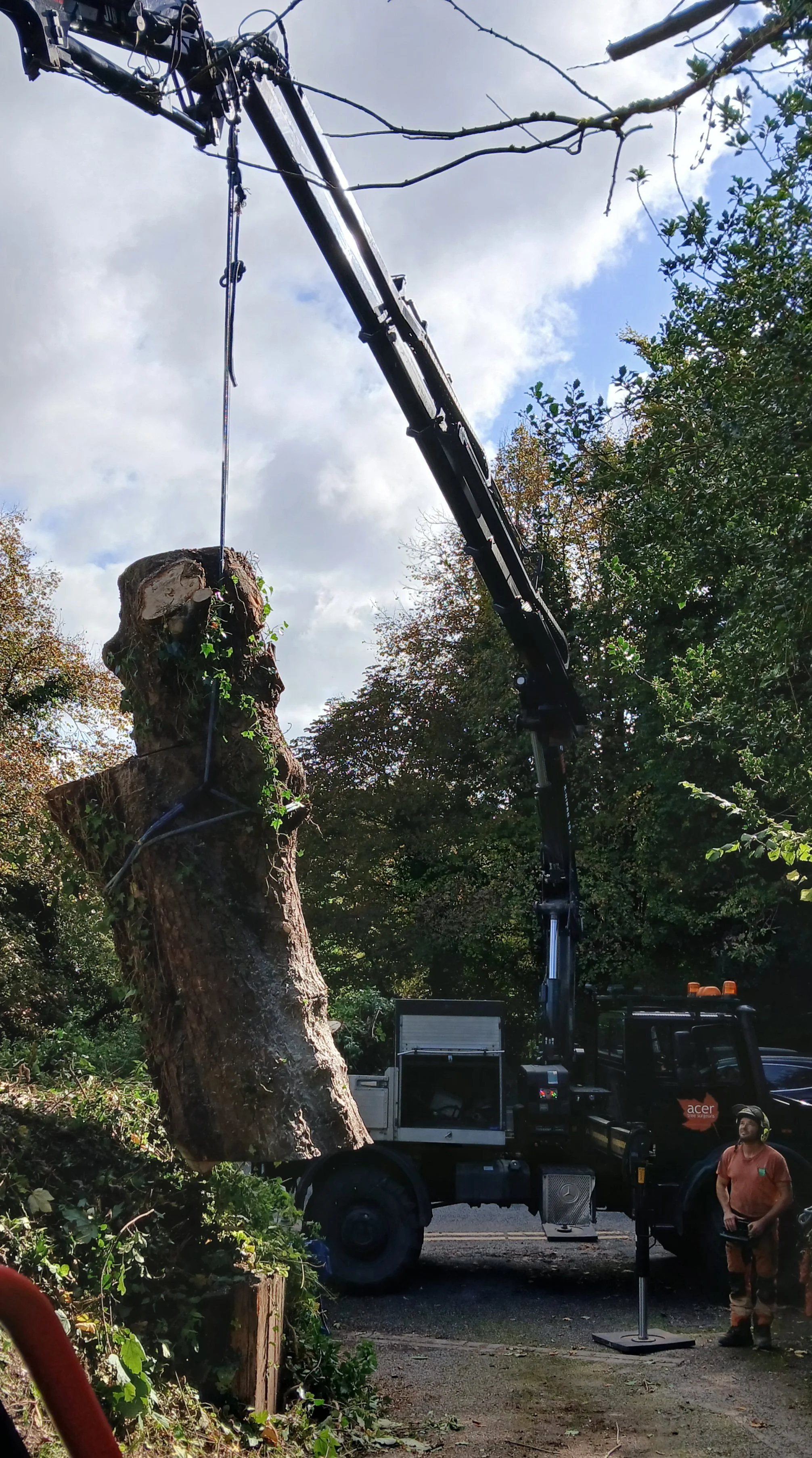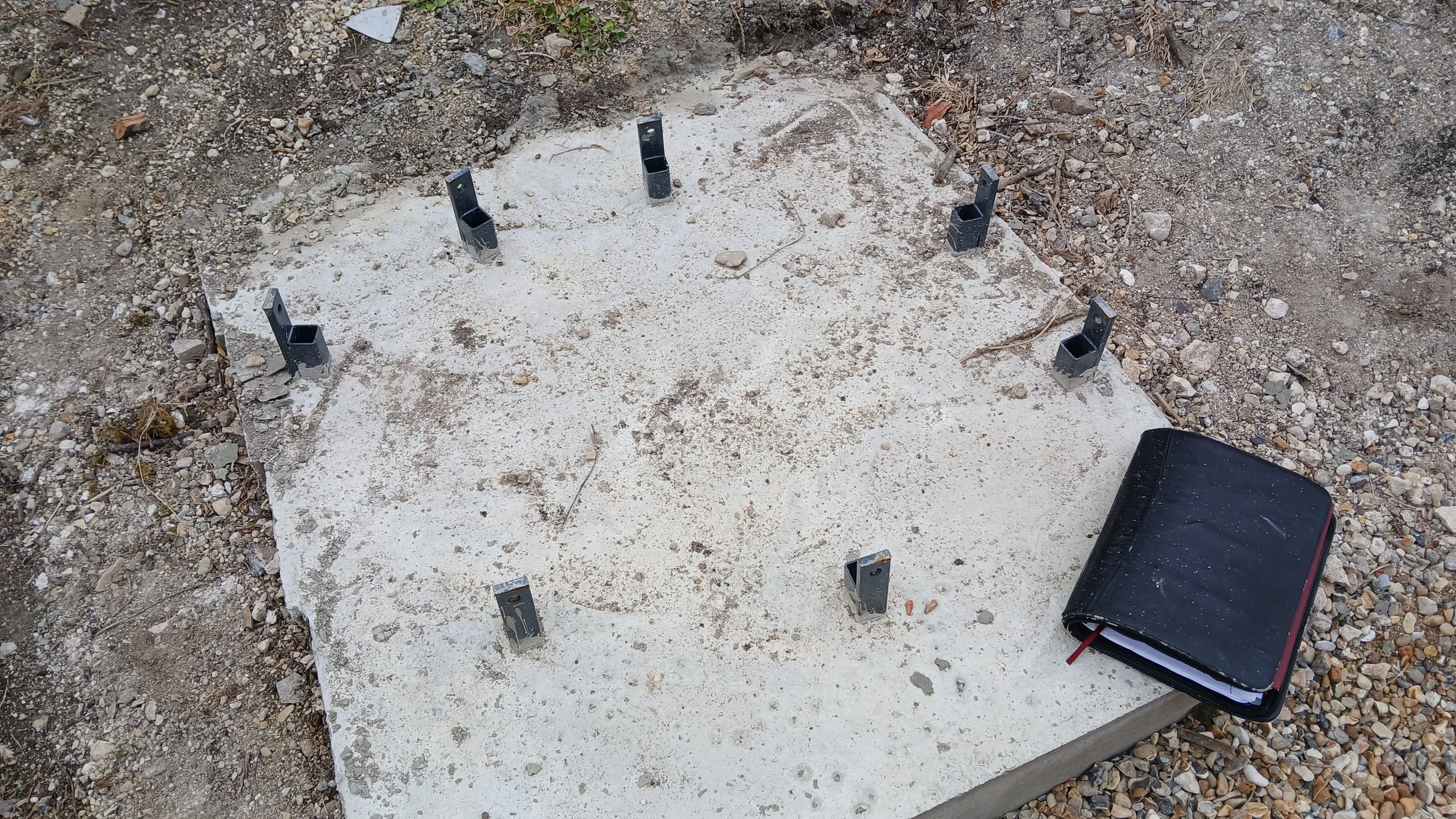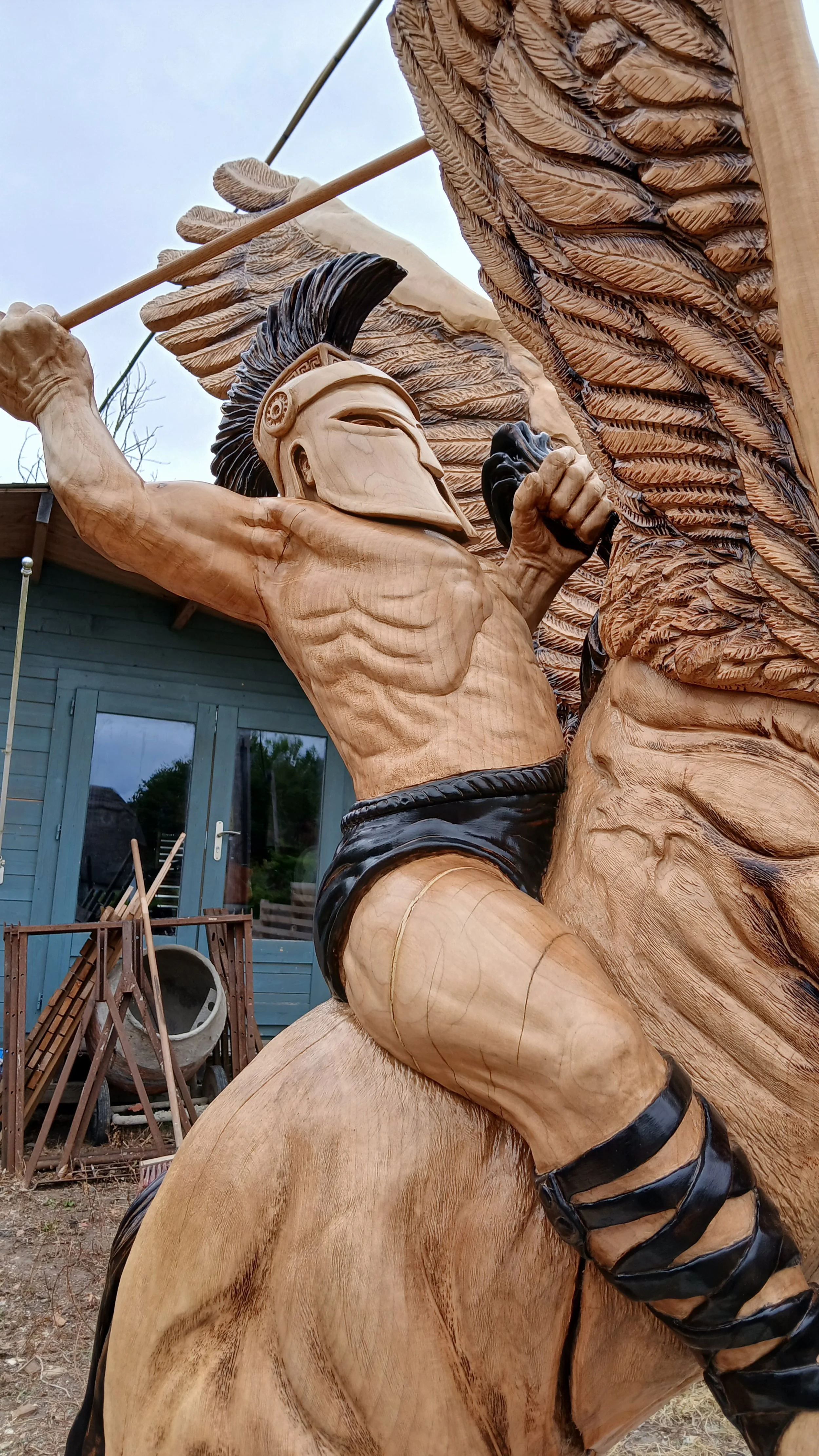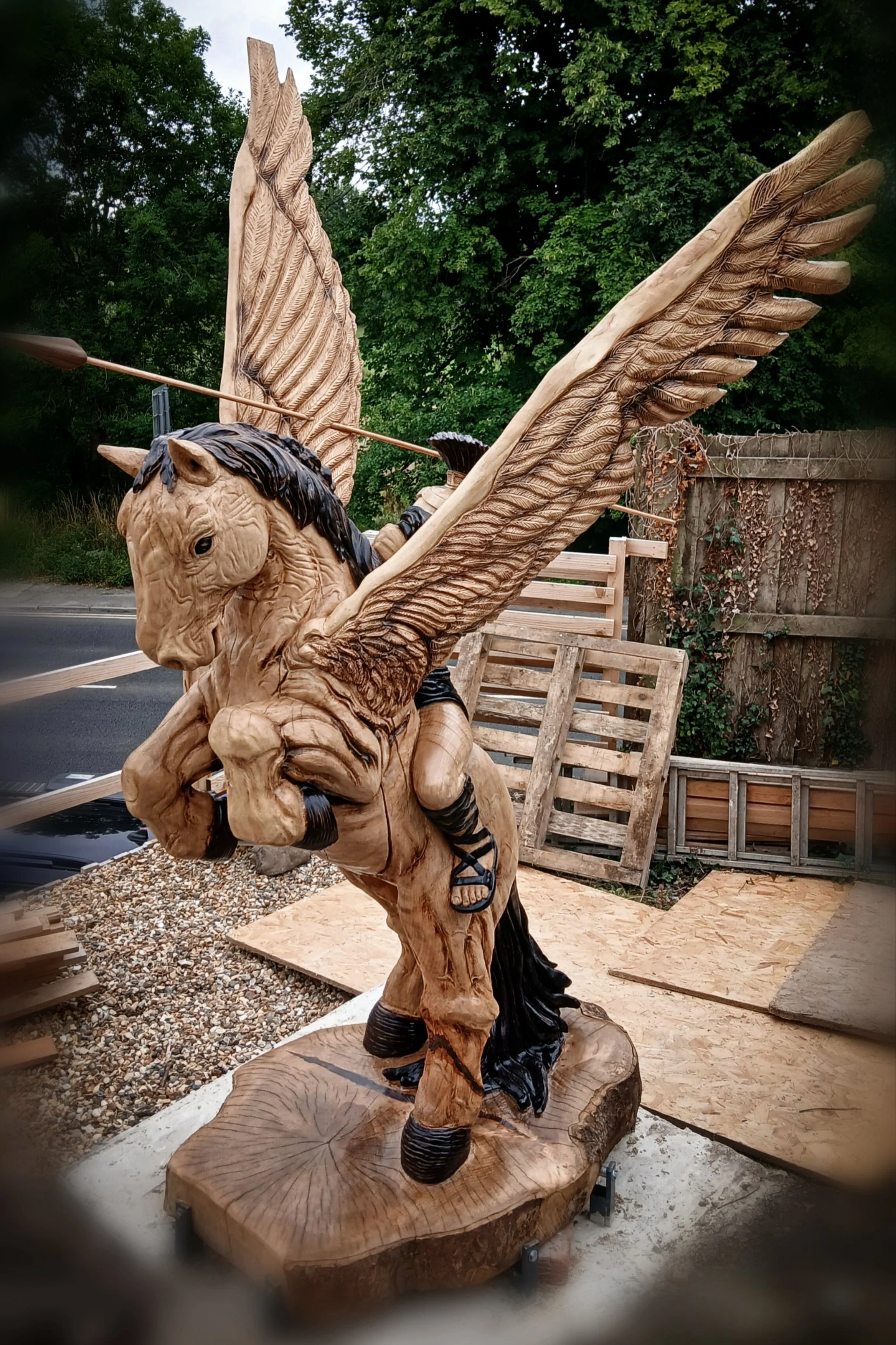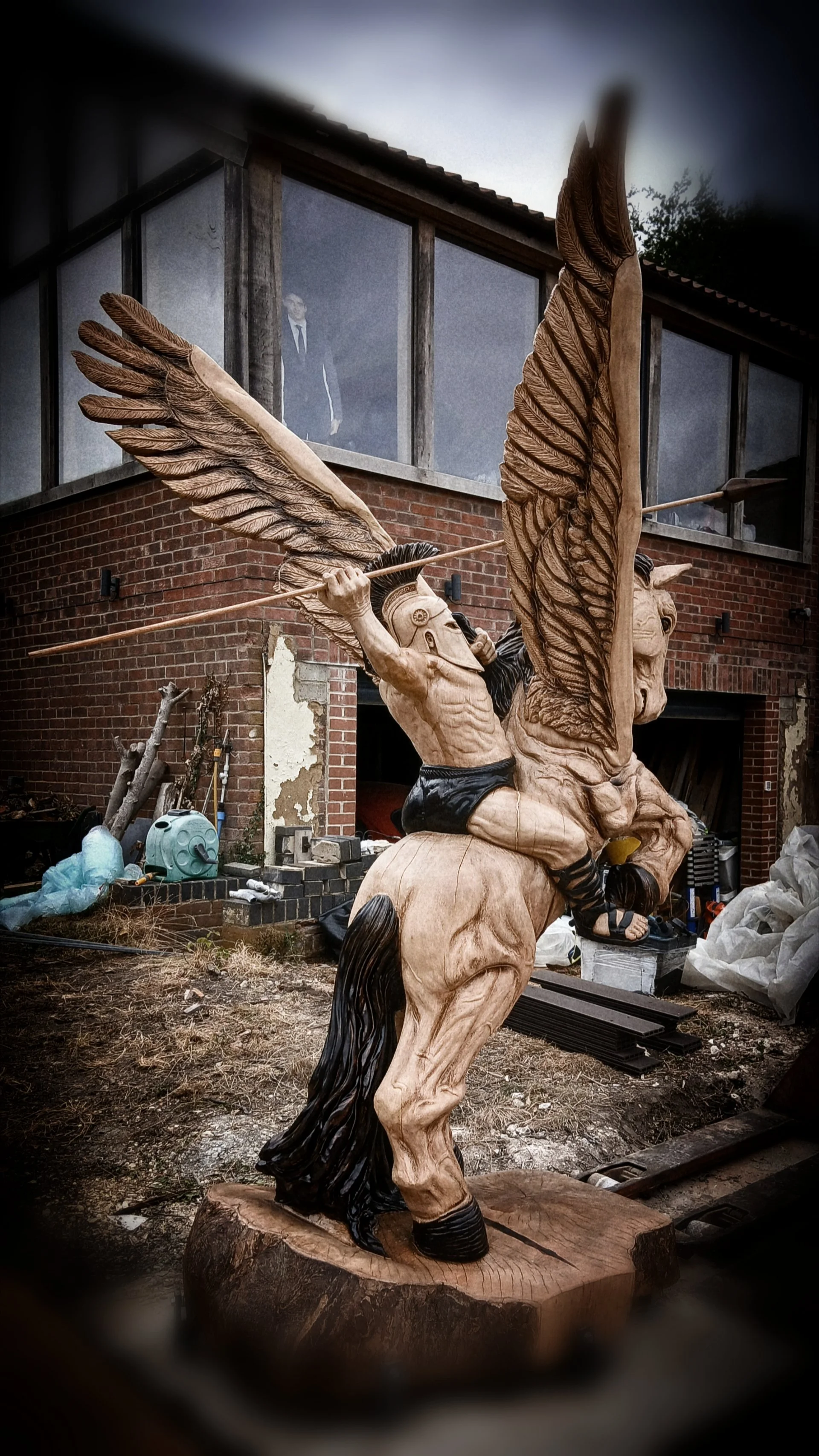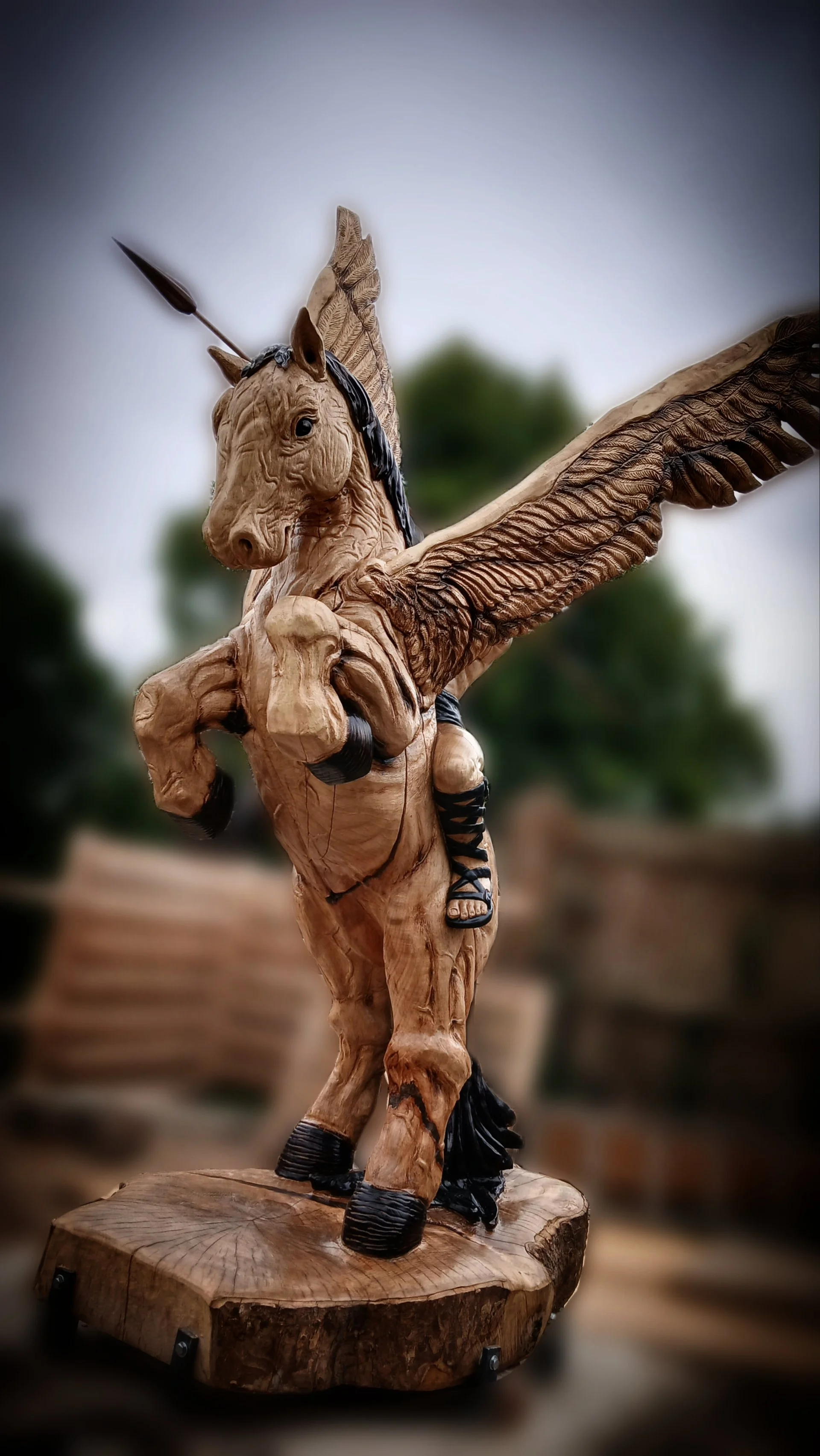The image of Pegasus and Bellerophon has been used as the emblem for the British Airborne Forces since 1941. This piece was commissioned by a client who’s Father, Captain Harry Roberts, enlisted and gained a commission in the Royal Mechanical and Electrical Engineers (REME), before volunteering for the Airborne Forces and posted to the 1st Airborne Division Workshops (REME).
He was wounded and paralysed at the battle of Arnhem and later captured as a prisoner of war. He gradually regained the use of his legs, despite a bullet still embedded near his spine and being told “you have no right to be alive”.
He and his fellow prisoners were eventually liberated by the advancing American forces and later repatriated to England. He recalls the details of these experiences in a book published posthumously by his wife, ‘Capture at Arnhem’ [by Windrush Press in 1999].
This commission piece has been a privilege to work on and I’m very proud to have created a lasting tribute to a brave, thoroughly honourable man and to the Airborne Forces as a whole.
The brief slideshow below shows some of the key stages during construction. The initial trunk was a sycamore tree taken from the client’s garden. Weighing over a ton, it was a logistical challenge before carving even began. The body section of Bellerophon and his head are separate pieces taken from the offcuts under the legs of Pegasus. The wings were milled from the sides of the trunk and then, after some complex joinery, tenoned into the side of the torso. The spear shaft is an oak dowel with a walnut spearhead.
